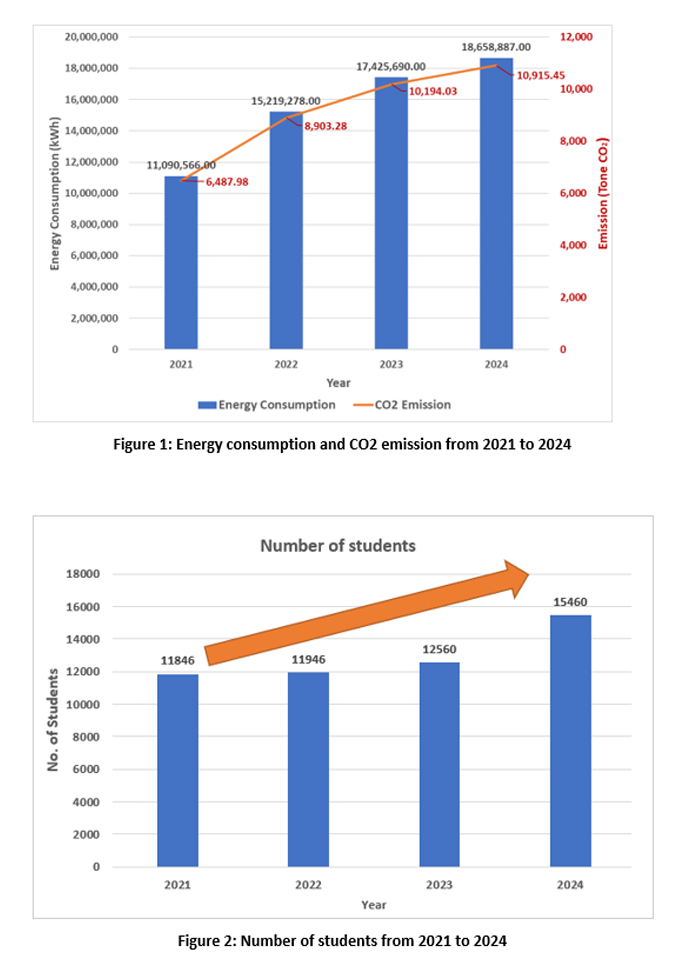Energy Consumption and CO2 Emission at Universiti Teknikal Malaysia Melaka
Introduction
The energy consumption and CO2 emissions of Universiti Teknikal Malaysia Melaka (UTeM) have seen a significant increase from 2021 to 2024. The trend is closely associated with the growing number of students enrolled at the university. This report analyzes the correlation between energy consumption, CO2 emissions, and student population growth, providing insights into the impact of university expansion on environmental sustainability.
Energy Consumption and CO2 Emissions Trend
Figure 1 presents the energy consumption in kilowatt-hours (kWh) alongside CO2 emissions measured in metric tons from 2021 to 2024. The key observations from the graph are:
• 2021: Energy consumption stood at 11,090,566 kWh, with 6,487.98 metric tons of CO2 emissions.
• 2022: Energy usage increased to 15,219,278 kWh, leading to 8,903.28 metric tons of CO2 emissions.
• 2023: Further growth saw energy consumption rise to 17,425,690 kWh, with CO2 emissions reaching 10,194.03 metric tons.
• 2024: The highest recorded energy consumption was 18,658,887 kWh, with CO2 emissions peaking at 10,915.45 metric tons.
The increasing trend in energy consumption and emissions suggests a rising demand for electricity, possibly due to infrastructural expansions, increased use of electrical appliances, and an overall increase in campus activities.
Student Population Growth and Its Impact
The second graph illustrates the increasing student population at UTeM:
- 2021: 11,846 students
- 2022: 11,946 students
- 2023: 12,560 students
- 2024: 15,460 students
From 2021 to 2024, the university’s student population grew by approximately 30.5%, with the most significant rise occurring between 2023 and 2024. The increase in student numbers directly correlates with the rising energy consumption and emissions.
Correlation Between Energy Use and Student Growth
The steady rise in student population has led to greater energy demands for the following reasons:
- Increased Classroom and Facility Usage: More students require additional classrooms, laboratories, and study spaces, leading to higher electricity usage for lighting, air conditioning, and equipment.
- Accommodation and Campus Services: The need for student hostels and dining facilities increases energy consumption through heating, cooling, and cooking processes.
- IT and Technological Demand: More students mean greater dependency on computing resources, including computers, servers, and Wi-Fi infrastructure, all of which consume electricity.
- Campus Activities and Operations: As the student body expands, extracurricular and academic events increase, requiring more energy for sound systems, lighting, and electronic devices.
